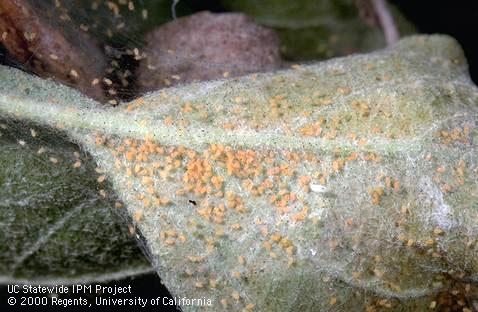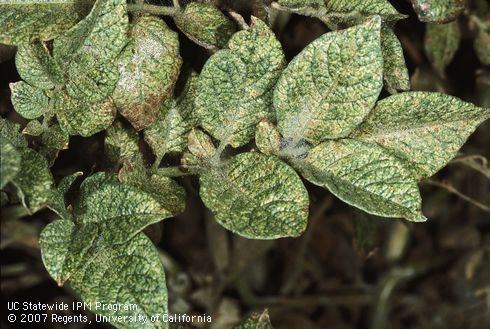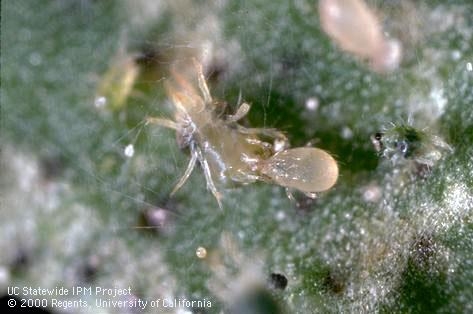Twospotted spider mites and their silken webbing, Jack Kelly Clark, UC IPM.
What are Spider Mites?
Crop damaged by spider mites, Jack Kelly Clark, UC IPM.
The initial damage generally appears as a stippling of light dots on the leaves. Heavily infected leaves turn yellow or bronze and fall off. To spread to new locations, these mites make use of “ballooning” by becoming airborne on a strand of webbing in the wind. If conditions are favorable, some spider mite varieties can hatch in 3 days and become sexually mature in as little as 5 days. A female can lay up to 20 eggs per day, live to 2-4 weeks, laying hundreds of eggs. This accelerated reproductive rate allows their numbers to grow rapidly, and to adapt quickly, becoming resistant to pesticides.
How To Control Spider Mites
Adult western predatory mite, Jack Kelly Clark, UC IPM.
Keeping the dust down by planting ground covers, using mulches, and irrigating regularly also reduces the chances of getting spider mite infestations. Ensure your plants are getting enough water to reduce drought stress – stressed plants are more susceptible to harmful insects and diseases. If you do have a large spider mite population, apply water spray or mist to the undersides of the leaves at least twice a day to help decrease their numbers since they prefer dry conditions.
Crop damaged by two-spotted spider mites, Jack Kelly Clark, UC IPM.
For More Information
UC Integrated Pest Management (IPM) has additional information on how to identify spider mites, their life cycle, plant damage, and how to control:
UC QUICK TIPS: https://ipm.ucanr.edu/QT/spidermitescard.html
UC PEST NOTES: https://ipm.ucanr.edu/legacy_assets/PDF/PESTNOTES/pnspidermites.pdf
Denise Godbout-Avant has been an UC Cooperative Extension Master Gardener in Stanislaus County since 2020





